#Lahamu
Text
Tiamat, Mesopotamian Mother Goddess: From Chaos to Creation | Ancient Origins
Tiamat, Mesopotamian Mother Goddess: From Chaos to Creation | Ancient Origins
https://www.ancient-origins.net/myths-legends-asia/tiamat-mesopotamia-0010565
View On WordPress
#Andrurna#Anshar#Apsu#Babylon#Ea#Enuma Elish#Kishar#Lahamu#Lahmu#Marduk#Mesopotamia#Mummu#Qingu#Tiamat#Tiamut
2 notes
·
View notes
Text
Black shemale mistress fucks her slave
BANGBROS - Oh, Look, It's A 2nd Mr. Anal Comp., This Time Ft. Jade Jantzen, Diamond Kitty & More!
Mirella Mansur at gloryhole playing with a big black dick and doing footjob, sucking all and taking a huge cumshot in her mouth
Micropenis masturbation
Black man fuck bounce an milf White woman with bbc Amateurs (Homemade)
Muscle Man Fucks Horni Twink and Cumfacial
Solo military
shower blow job and fucking. moved to bedroom for a long doggystyle finish
Free straight porn stars go gay and hot housewife with boy husband
Tranny With A Hard Dick Jerking Till Cum
#perceivers#tuitionless#symbolology#organotrophic#demiowl#withertip#quantized#placably#griffinesque#kilim#herds#lenientness#Lahamu#Zorah#knavishly#godchild#pants#vocalised#toileted#unbeing
0 notes
Text
here's a list of all the curses used in tiamat cause they're absolutely golden and i just had to write them down
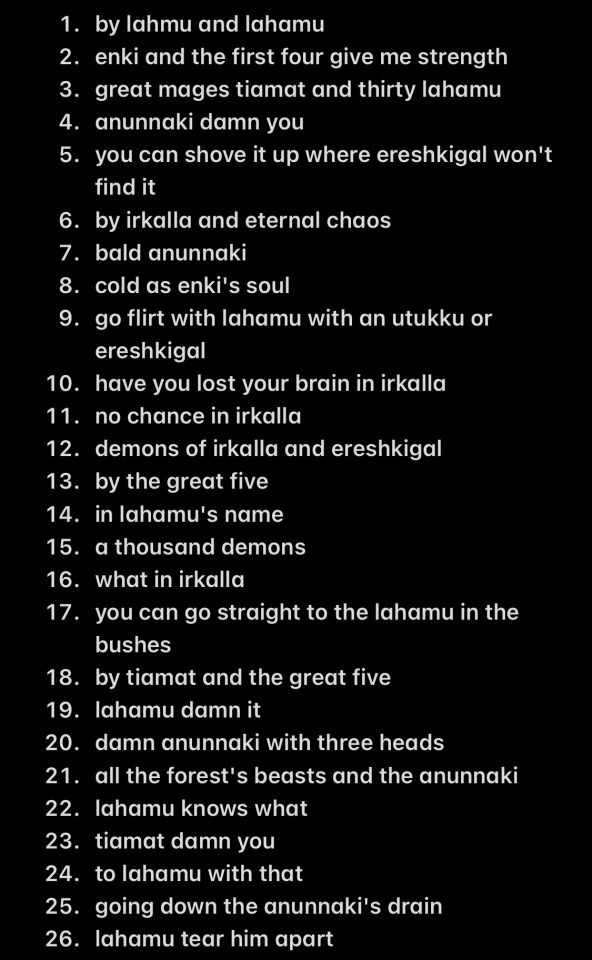

#41 was personal#there's actually one missing but i wont replay it again now just for that so 😭#insults aren't included otherwise this list would be endless#rip to lahamu lizard kingu#romance club#the flower from tiamat's fire
26 notes
·
View notes
Text
hey I just realized something. does anyone else call the elemental core "pepsiman"
#literally had to go look up what it was actually called bc we have never not called it pepsiman#lahamu just has a pepsiman-esque look to them. + the orb? man that's the pepsi orb. come on. how did they get away with this#sopffic
3 notes
·
View notes
Text
Tiamat Deity Guide
We’re digging into the Old Gods today, folks. Buckle up!

Who is Tiamat?
Tiamat is a Goddess from Babylon. She is the Goddess of the sea, magic and primordial chaos. Together, Tiamat and Abzu (the Sweet Sea, or fresh water) mingled and made the Gods. Tiamat is often depicted as a giant serpent or snake, though no true representation from Mesopotamia exists as far as we know. The Hellenistic version of Tiamat shows her as having the upper body of a woman but has legs made of snakes. Other interpretations of her are of a woman with a human upper body and the body of a snake, a dragon, as well as a half reptilian woman.
Parents and Siblings
No Parents or Siblings
Lovers or Partners
Abzu/Apsu
Children
All the Sumerian Gods
as well as monsters known as Tiamat’s Creatures:
Musmahhu, Usumgallu, Basmu – three horned snakes, Furious, Exalted, and Venomous
Umu-dabrutu – a raging storm
Mushussu – a snake-dragon
Lahamu – a hairy beast-man
Ugallu – a lion-demon
Uridimmu – a lion-human hybrid
Girtablullu – a scorpion-man
Kulullu – a fish-man (merman)
Kusarikku – a bull-man
Epithets
Thalatta (Greek)
The Glistening One
She who bore them all
Notes
Though there weren’t any cults dedicated to Tiamat, her fight with Marduk was important during the Akītu festival and some believe that a performance of this battle was held during the festival.
Tiamat was known as a Mother of the Gods first in the Enuma Elish, but later became the story’s antagonist after her husband was murdered by the younger gods. In this latter half she embodied primordial chaos. It is in this myth that she takes on the form of a sea serpent or dragon.
The younger gods killed Abzu because he had planned on killing them in some stories, in others they overheard a conversation between him and Tiamat where he suggests she do away with them since she was the one who created them. Tiamat says no to this and urges her husband to not fight with the younger gods.
She set dragons who’s bodies where filled with poison against her opponents.
Tiamat and Nammu/Namma aren’t really the same deity, Tiamat took on the role of Nammu/Namma later. The two are very different in literature, however.
It was said that after her defeat, Marduk tore Tiamat’s body in half to create heaven and earth.
Her crying eyes became the Tigris and Euphretes rivers and her tail became the Milky Way
Her name may come from the word tiamtum meaning “sea”.
Modern Deity Work
Since there were no cults specifically dedicated to Tiamat, and there aren’t too many resources on modern day worship/deity work with her, here are a few things I found while researching her.
Correspondences
Rocks/Stone/Crystals
Sea glass
Onyx
Herbs/Plants
Dragon’s Blood
Animals
Snake
Dragon
Symbols
Dragon
Offerings
Sea water and sea related things
Fresh water
Candles
Wine
Sea salt
Fruits
Meat
Music
Acts of Devotion
Dance for her
Sing for her
Research her culture and stories
Swim in the ocean
References and Further Reading
Tiamat - World History Encyclopedia
Tiamat - Wikipedia
Tiamat - Ancient Mesopotamian Gods and Goddesses
The Seven Tablets of Creation by Leonard William King (via Sacred-Texts)
Alster 1999, "Tiamat"
Katz 2011, "Reconstructing Babylon"
Lambert 2013 Babylonian Creation Myths
Vanstiphout 1992, "Enuma Elish as a Systematic Creed"
Namma - Ancient Mesopotamian Gods and Goddesses
82 notes
·
View notes
Text
🌊 Goddess Tiāmat 🌊
🔷 Tiāmat information on the Open Richly Annotated Cuneiform Corpus (Oracc)
🔷 From A Handbook of Gods and Goddesses of the Ancient Near East by Frayne & Stuckey:
Ti'amat, Tâmtum (page 345)
Primeval goddess, personification of the sea, in the Enuma eliš. Attested as early as the Ur III period in a theophoric name of one of the wives of Šu-Sîn. The goddess's name means "Sea" ti'amtu(m). At first, according to the Enuma eliš, Ti'amat's salt waters were co-mingled with those of her husband Apsû, the fresh waters, and together they engendered various deities, including the sky god Anu. Eventually, Ea, Anu's son, slew Apsû. Then, in a heroic battle, Ea's son, Marduk, slew Ti'amat, splitting her body in half. Marduk made one part into the vault of the heavens and the other into the surface of the earth. He made the clouds from her spittle, the mountains from her head, and the Tigris and Euphrates Rivers from her tears. She had bestowed the Tablet of Destiny on Qingu, but when Marduk defeated Qingu, he gave the tablet to Anu. There was a "seat" of Ti'amat in the temple of Marduk in Babylon, and Marduk's "seat" there was named Ti'a mat An Ugaritic lexical text equates Ti'amatu to the Mesopotamian goddess Antu(m). She occurs in an Ugaritic god list as Tihāmātu / Tamatu.
🔷 From Gods Demons & Symbols of Ancient Mesopotamian by Black & Green:
Tiāmat (page 177)
In the unique version of the creation of the gods preserved in the Babylonian Epic of Creation, after the separation of heaven and earth the only entities in existence were Apsû [...] and Tiamat. Apsû personified the fresh subterranean waters and Tiāmat the salt waters: the name is a form of the word tiamtum, 'sea'. Apsû and Tiāmat were envisaged as a male-female pair, although it is said that 'their waters mingled together'. They engendered a line of gods including Anu (An), Anu's son Ea (Enki) and (apparently) other deities, whose activities so disturbed Apsû that he planned to exterminate them (despite Tiāmat's protests). When Ea slew Apsû, Tiāmat determined to be avenged and created eleven monsters [...] with, as her champion, the god Qingu, described as her 'lover'. Eventually, after a heroic contest, Marduk, champion of the younger gods (in the Assyrian version his name is substituted with that of Aššur), defeated the monsters and Qingu and destroyed Tiāmat by splitting her skull with his mace, while standing on her 'lower parts'. He broke her in two 'like a dried fish', using one half to roof the heavens and the other to surface the earth: her breasts formed mountains, Tigris and Euphrates flowed from her eyes, her spittle formed clouds. While in some respects Tiāmat, like other deities, is described in anthropomorphic terms, it is difficult to form a precise picture of how the author of the Epic envisaged her. In other passages it seems to be implied that the salt sea waters were inside her.
Tiāmat's Creatures (pages 177-178)
In the Babylonian Epic of Creation, in order to avenge herself on the younger gods, Tiāmat gives birth to eleven monsters, or groups of monsters (bearing some resemblance to the Slain Heroes defeated by Ningirsu or Ninurta in a story of earlier origin). The eleven are:
the mušmahhu, ušumgallu and bašmu (three types of horned snake)
the mushuššu (a snake-dragon)
the lahamu (possibly identical to Lahmu, the long-haired ‘hero' figure)
the ugallu ('great storm-beast', the lion-demon)
the uridimmu ('raging lion', the lion humanoid)
the girtablullû ('scorpion-man': see scorpion-people)
ūmu dabrūtu ('fierce storms')
kulullû ('fish-man': see merman and mermaid)
kusarikku (a mythical beast probably derived from the bison: see bull man).
All of these are defeated by Marduk (in the Assyrian edition, Aššur) in a great battle. Images of them were placed by Marduk in the apsû (abzu) as a monument to the victory. The creatures of Tiāmat were sometimes invoked in magical incantations [...], and figurines of some of them were among those used in Neo-Assyrian protective magic, as a consequence of which their distinctive iconography can in most cases be determined.
🔷Potential Imagery of Tiāmat
These are academically debated as to whether or not they are Tiāmat but they are possibilities so I've included them. I have increased the contrast in both photos for visibility.

Faience, now cream probably originally glazed, cylinder seal; a standing archer (Marduk?) aims an arrow at a serpent (Tiamat?) with a crested head which rises before him. The figure wears a horizontally-striated robe and lines above his shoulder indicate arrows in a quiver. There are groups of wedges between the figures and above the serpent's coiled tail. Line border at top and bottom. — British Museum Asset Number 159745001

Black or dark brown and pale brown serpentinite cylinder seal in the linear style; a snout-nosed, horned reptile (Tiamat as a dragon?) faces left; the upper third of it's long, cross-hatched body rises vertically from two front paws or hands, one of which is raised; the remainder of the body runs around the bottom of the seal and supports three figures; there are no hind legs. A bearded god (Ninurta?) runs along the reptile's body towards the left; he wears a feather-topped head-dress and a vertically-striated, tiered and fringed open robe over a fringed kilt and has crossed, wedge-tipped quivers on his back. His arms are stretched out on either side, and in his right hand he holds a six-pronged thunderbolt below which is a rhomb, while in his left he holds two arrows. Behind the god, and advancing towards the left, is a smaller bearded god in a horned (?) head-dress with a long, tasselled streamer or necklace counterweight hanging down behind; he wears an open robe similar to that of the running god and holds a spear before him in both hands. On the tail of the reptile, with her back to the smaller god, stands an even smaller goddess, who wears a feather-topped, horned head-dress with a short tassel or necklace counterweight hanging behind, and a belted, vertically striated, tiered robe; she holds her arms open to seize the snout of the reptile. To the left of her head is a small globe-with-rays and to the right, a crescent. Line borders at top and bottom broken by the running god's head-dress. The seal may illustrate a scene from the epic of creation in which the forces of chaos, led by Tiamat, are defeated by a god representing cosmic order, probably Ninurta. Shiny, some chipping and weathering; note that there is a chip by the smaller god's shoulder and the tassel of his streamer may mask damage. — British Museum Asset Number 159863001
🔷Enūma Eliš
The myth she appears in. It was a very political myth used to justify Marduk as chief deity and therefore the government.
Read it:
L W King Translation from 1902
Translation on Electronic Tools and Ancient Near East Archives (ETANA)
Compiled translation primarily based on E.A Speiser
E.A Speiser's translation is available in The Ancient Near East an Anthology of Texts and Pictures by James Pritchard page 28. Available on Internet Archive Library (accounts are completely free and you can borrow books for an hour at a time)
Interesting analysis of how it represented the creation of government

Analysis from Treasures of Darkness by Thorkild Jacobsen also available on Internet Archive Library
🔷Please Avoid
Due to such little info being available people often turn to other sources, as you try to research yourself I ask you to keep these in mind as warning signs.
⚠️The book "Grimoire of Tiāmat" is bullshit, and from a Mesopotamian religious point of view completely dangerous
Anything that uses her with dragon magick & neo-pagan/witch sources in general
Feminist & Jungian sources, they twist Goddesses' stories for their, usually westernized, agenda, and preconceived archetypes
-not audio proof read sorry-
#polytheism#paganism#tiamat#dragon#goddess#levpag#tiāmat#im putting that tag because shes just slapped with that label#landof2rivers#deity resource
29 notes
·
View notes
Text
FLOWER FROM TIAMAT'S FIRE: Morning After
Slightly NSFW
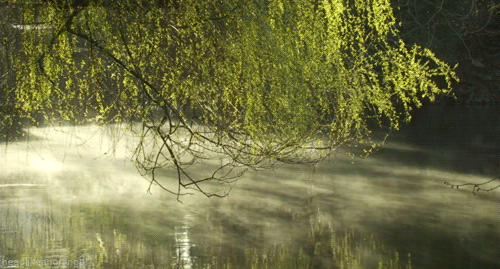
Early morning rays of Ur peaked through the curtains of Kingu's bedroom, catching his gaze as he grunted and started to awaken. He blinked several times before fatigue faded from his body, causing him to sit up and stretch his arms out before him. He ran one hand through his hair, looking towards the sunlight with a small smile before his eyes fell upon the love of his life next to him.
Nikkal still slept soundlessly, draped in the velvet sheets that she used to control him the night before. Her long hair looked like curtains over her shoulders, and she was obviously a blanket hogger. Her naked body hugged the entire blanket, showing off an outline that he wanted to re-trace with every inch of his lips and tongue. Kingu bit back a chuckle as he tucked the strands of hair from her eyes, leaning forward to kiss her forehead.
"Mmmm...." Nikkal's eyes narrowed as she blinked twice. Her body creaked with each move, causing her to groan as she stretched out her back. The stress of last night how many times they did it, she was starting to notice how much her body was sore. Kingu caressed her cheek with his knuckles.
"Good morning, Lady."
"Mmmm...." Nikkal moaned as she pulled the blanket over her head to avoid daylight. Kingu frowned and arched a brow, crawling towards her and shaking her shoulders.
"Nikki."
Nikkal rolled to the opposite end, shaking her head. Kingu, amused, sucked in his lips through his teeth and tried to nudge her awake, but each time he did, she'd adjust her weight to avoid his touch. Narrowing his brows together, he caught her in his arms just as she made another escape attempt.
"Agh! Kingu, how dare you?!" Now she was on alert as he cradled her against his chest. "It's still early."
"The sun's been up the entire time, my Love," he smiled. "It's time to awaken."
"Uh, I hate you," Nikki grumbled.
"Now you don't," Kingu kissed her shoulder.
"And last night was subpar."
Kingu's head perked up as the words escaped her mouth, leading him to notice her triumphant smile and her arms crossed against her chest. She wanted to be petty, well he could, too. He shoved her on her back, causing her to yelp when she hit the pillows. She tried to wriggle herself free, but Kingu grabbed her wrists and pinned each one above her head.
"Subpar?" He gritted his teeth. "Because if I remember correctly...you begged me to choke you."
"I'll choke you NOW if you don't let me go, my Lord," Nikkal growled.
"Is that so?" Kingu leaned in closer as his lips brushed her ear. "Because you're trapped underneath me."
Nikkal shuddered and looked away defiantly, a deep blush crimsoning her cheeks. Kingu laughed, a deep throaty laugh that Nikkal loved, and cupped her chin with his palm, turning her head around to kiss her luscious lips. With one arm still above her head, Nikkal used her one free hand to tangle his midnight black hair, sliding her tongue in his mouth. Pulling away, he smiled deep into her yellow eyes. Nikkal blushed and smiled back, biting her lower lip shyly.
"Lahamu be damned, you're beautiful," Kingu rasped. Nikkal's heart swelled, eyes widening as he captured he lips once more. He wrapped one arm around her back and lifted her without breaking contact. Nikkal balanced herself on his lap, resting her hands on his shoulders. Kingu wrapped her even closer, entangling one hand through her hair.
This morning just made her a little less tired.
10 notes
·
View notes
Text
close the blinds and kill the birds
Written for @ftf-appreciationweek Day 1: Nikkal/Fire!
Also on AO3
-
Firelight swayed on her ceiling.
Some kids were playing with it outside. Their shouts of delight in the night, probably as they threw flames to one another, still reached her bedroom.
If only it’d lull to her to sleep. But all she wanted was to be outside too, playing with more than sparks.
The fire cast no distinctive patterns on her ceiling, but still it was like it was dancing for her eyes only. Now wasn’t that a thought?
She hadn’t had fun in her element since— Lahamu, she couldn't even remember. It'd been a while, maybe even before she came to the Academy. Others could be one with their magic. Could sink into it, or let the air fill them in completely, or bury themselves in the earth.
She just wanted to dance with hers.
Nikkal lifted one trembling finger. Breathed in, and out, and in. Her palm heated up, light coming from within. She opened her hand. Sparks jumped from her heart line, illuminating her and her bed for a second before fizzling out.
It wasn’t like she couldn’t make flame. But it was like her flame was always gasping for air, always one misstep away from being extinguished.
Fire isn’t meant to be in a cage. It will eat you alive.
(This is what she dreamed of: in these quiet hours when sleep wouldn't come, when all she had was her own heartbeat, she could feel it, the forest fire burning inside her veins. And she wished that if she closed her eyes and let herself forget for long enough, the flame might actually consume her. She could finally burn in it, play with it like a child.
This is what she dreamed of: letting the fire burn her bedroom, the forest, the world. Flames reaching the sky, scorching the earth. She dreamed of smoke trapping her airways, of dancing and screaming amidst flame, to become one with it.)
A stupid tear fell out as she closed her eyes. The light dancing in the ceiling burned behind her eyelids.
She didn't actually want to burn the world. She just wanted to burn, to be, to exist. She just wanted what fire wanted: more more more more. Fire didn't care. It was free.
Maybe this is why she didn't have enough of it anyway. Because Tiamat knew what she saw in her dreams.
Fire isn't meant to be in a cage.
But hers was.
23 notes
·
View notes
Text
Yaratılış Mitleri -Bir Babil Miti: ENUMA ELİŞ
Sanat tarihi akımları hakkında okumalar devam ederken bir yandan da yaratılış mitleri hakkında yazılar derleyeceğimden bahsetmiştim. Zerdüşt ve İskandinav mitleri yazılarım da taslaklarda hazır ancak içerik olarak vakit buldukça farklı kaynaklardan zenginleştirmeyi bekliyorum. Bu yazıları derlerken hem öğreniyor hem de mutlu oluyorum.
Eski Yakın Doğıu mitleri arasında en öne çıkanlardan biri olan Enuma Eliş, Babil bilgi dünyasının da en önemli ve temel bilgi kaynaklarından biridir. Bu epik şiirde amaç daha çok Babil’in tanrısı olan Marduk’u kutsamaktır. Miti okurken özellikle Yunan mitolojisini ve oradaki Kronos-Zeus ilişkisini düşünerek okumanızı tavsiye ederim

Enuma Eliş ismi yazının açılış cümlesinden gelmektedir: “Enuma elish la nabu shamanu…”
Yani çevirisini yazacak olursam “Yukarıda göklere adı verilmemişken (henüz manasında)
Tarihsel anlamda bu mit ilk olarak Ninova’daki Kral Asurbanipal’in (MÖ 668-626) kütüphanesinin yıkıntıları arasında keşfedilmiştir. Ancak kalıntının içinde övgüyle anlatılan Marduk’tan yola çıkarak söz konusu mitin Marduk’un milli bir tanrı haline geldiği ilk zamanlardan geldiği düşünülmektedir. İçinde bahsedilen olaylar MÖ 2057-1758 yılları arasında geçer, en çok da ünlü kral Hammurabi (MÖ 1990) dönemine denk geldiği görülmektedir.
Enuma Eliş’teki bu çoğu ismin esasen Sümerce olduğu ifade edilmektedir ve Apsu, Anu, Enlil gibi tanrılarında Sümer Tanrısı olduğu ifade edilmektedir. Bu anlamda kesin bir şey söylenemese de bu Babil mitolojisinin büyük bir kısmı Sümerlerin bir türevi gibi gözükmektedir ancak Sümerlerde bir örneğine rastlanamadığı için kesinlik atfedilmemektedir.
Enuma Eliş karakter sayısı bolca olan bir mit, o yüzden ben okurken karakterleri soyağacı gibi çizerek okudum. Buraya da bir grafiğini bırakıyorum ki kafalar çok karışmasın.

Destan, Apsu (okyanus) ve Tiamat (ilksel sular – anne) beraber hareketsiz durmasıyla başlar ve sonunda bunlar tanrısal doğa güçlerini yaratırlar. Aile grafiğinde göreceğiniz üzere;
Kumu temsil eden Lahmu, çamuru temsil eden Lahamu;
Gökyüzünün ufkunu ifade eden Anşar, dünyanın ufkunu ifade eden Kinşar
Bulutların sisi ve entropi prensibini ifade eden Mummu yaratılır.
“Neden yaptığımız çocukları yok edelim? “
Çocuklar büyüdükçe düzensiz dünyaya bir düzen getirmeye uğraşırlar, aralarından soyları türer. Her geçen süre daha isyankar hale gelirler. Bunların var edicisi Apsu ve Tiamat çocukların bu hallerine gücenip öfkeyle ağırklıklarını yeniden göstermek isterler. İçlerinden Mummu’yu çağırıp diğer genç tanrıları öldürmek için komplo kurarlar. Fakat bu plan suya düşer çünkü Tiamat annelik kaygısıyla geri çekillir ayrıca bu geri çekilmede 3. Soyda bulunan Suyun ve Toprağın Efendisi Ea’nın (başka deyişle Enki veya Nudimmud) Apsu’yu kurnaz hünerleriyle yolundan döndürmesi de vardır. Bu olaylar sonrası Ea Mummu’yu hapseder, Apsu’yu ise bağlar ve öldürür.
Ea’nın karısı Damkina’yla birliktelerinden muhteşem Marduk dünyaya gelir.
“O, derindeki sularda doğdu. Marduk, Apsu’nun kalbinde oluştu, onun kalbinde yapıldı. Ea onu doğurttu ve Damkina onu doğurdu. O tanrıçaların memesini emdi, süt analarından dehşetle beslendi.”
Babası Ea, onu görür görmez sevinir, onun mükemmel olduğunu fark ettiği için onu birinci ve en yukardaki ilan eder.
Ayaklan, Annemiz! Onlardan öcünü al ve onları rüzgar gibi içi bomboş yap.
Marduk büyürken gökyüzünün ulu babası Anu ise savaşçıları yönetmeleri için güçlü rüzgarları yaratır ve bu rüzgarları dört bir yandan estirir. Tiamat’ı korkutmak için dehşet bir kasırga meydana getirir.Diğer bazı tanrıların sürekli esen bu rüzgardan ve süregelen bu halden huzur kalmamıştır ve Tiamat’a gidip komplolarını anlatırlar.
Annelerine şöyle derler: “Apsu’yu öldürdüklerinde bir şey yapmadın, kocana yardım etmedin. Şimdi de Anu, dört yandan bu rüzgarları seni korkutmak için rüzgarları estiriyor. Terk edilmiş halde etrafta dolanıyorsun ve bizleri de artık sevmiyorsun. Gözlerimiz ağrıyor ve acı çekmekten bizler de artık uyuyamıyoruz.”
Bu gelişmeler üzerine Tiamat soyundan kendi genç tanrıları öldürmek için çeşitli işlere girer, bir takım düzensiz canavarlar yaratır. Evlendiği Kingu’yu da bu düzensiz canavarların şefi yapar.
“Bir zamanlar sözlerle bir tuzak kurmuştın, git ve dene onu.
Mumnu’yu öldürdün, Apsu’yu da öldürdün; Tiamat’ın önünde yürüyen Kingu’yu da öldür!”
Anşar, Tiamat’ın nasıl güçlendiğini duyduğunda huzursuz bir kedere kapıldı ve kendince direndi sonunda konuştu ve Ea’yı savaşmaya zorladı; onu zamanında yaptığı şeyleri tekrar yapması için telkin etti. Ea, Tiamatla görüşeceğini bildirir fakat yapmayı planladıklarının tamamını gördüğünde onunla yüzleşemez ve boynu eğik geri gelir ve Anşar bu sefer oğlu, göklerin ulu babası Anu’yu çağırır. Anu da gidip yüzleşemeden geri döner ve “Benim elim çok zayıf, onu yenemem.” Der.
Hangimiz savaşta en zorlu? Kahraman Marduk!
Tüm bu gelişmeler sonucunda Annunki tanrılar grubu toplantısı neticesinde efendi Anşar ve diğer tanrılar Marduk’u yardıma çağırır ve Marduk bunun karşılığında bu tanrılardan kendisinin üstünlüğünün tanınmasını ister.
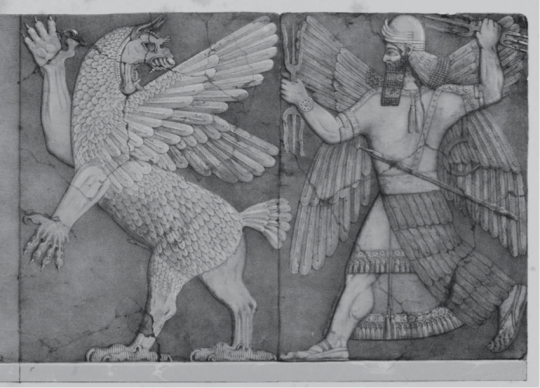
Neden isyan ediyorsun, kabaran kibrinle, kalbindeki çatışmayla, oğullar babalarını reddetsinler diye mi? Hepsinin annesi olarak neden savaşa annelik ediyorsun?
Hazırlanan Marduk sonunda Tiamat ile yüz yüze gelir, Kingu bile Marduk’u görünce bocaladı ve geride kaldı ama Timat hiç çekinmeden gürledi; Marduk’u kibir ve görmemişlikle suçladı. Marduk ise yukarıda başlıkta belirttiğim gibi Tiamat’a karşı suçlamalar yöneltti.
İkisi karşı karşıya gelip kavgaya tutuştular, Efendi Marduk, Tiamat’ın üzerine ağını attı ve sürekli esen vahşi rüzgar İmhullu arkadan gelerek Tiamat’ın yüzüne vurmaya başladı, Tiamat onu yutmak için ağzını açtığında Marduk rüzgarı içeri itti ve karnına inen hava Tiamat’ı şişirdi. Sonunda Marduk ona bir ok attı ve ok karnını yarıp Tiamat’ın rahmine saplandı. Efendi Marduk böylece Tiamat’ı yendi.
Gücü elinde tutan Marduk bu olaylardan sonra gökte yıldızların yerini tayin eder, tanrılara görevlerini dağıtır, gökyüzü ile dünyayı birbirinden ayırır. Kendini yaşayacak yer olan Babil’i kurar ve sonunda dünyadaki kaosa bir son vererek kendince bir düzen verir. Özellikle mitolojinin bu kısmında zamanı anlamlandırma, gökyüzünü anlamlandırma, tekrar eden doğa hareketlerini bir kalıba oturtabilme çabası görüyoruz.
Vaktiyle sizler derin suların üzerinde boşlukta oturdunuz fakat ben dünyayı, gökyüzünün aynası olarak yaptım, onun temellerini yapmak için toprağı sertleştirdim. Orada şehrimi, sevgili evimi kuracağım.
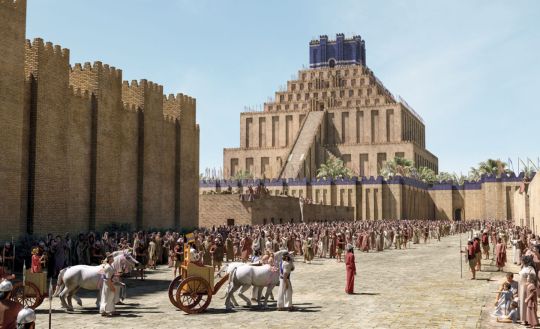
Fiziksel dünyanın düzeni efendi Marduk tarafından tahsis edildikten sonra Marduk kutsal bir alan oluşturmaya ve orayı yaşam alanı ilan etmeye karar verir. Tanrılar ona şükranlarını sunar ve büyüklüğü kabul ederler, krallarına şöyle haykırırlar;
İzin ver, Ea senin mimarın olsun ve mükemmel planı çizsin, biz de onun duvar ustaları olacağız.
Marduk tanrılardan da aldığı ilhamla bir sanat eseri yaratmak için heyecan içindeydi ve içinden geçenleri Ea’ya şöyle anlattı:
“Kanı kandan alıp
kandan ve kemikle,
özgün bir şey yaparım,
onun adı İnsan,
ilk insan
benim eserim olacak.
Onun tüm işi
sadakatle hizmettir,
düşmüş tanrılar dinlensin
onların görevlerini
dikkatle değiştireceğim
ama kutsallıkları
aynı kalacak.”
İnsan, tanrılara hizmet edecek olan!
Ea, dikkatle dinledi ve Marduk’a soylarından bir kişinin öldürülmesinin diğer tanrıları yaşatmak için yeteceğini ifade etti. Toplantılar sonucu isyanı başlatanın Kingu olduğu, savaş suçlusu olduğu söylenir.
Onu suçlu ilan ettikten sonra Kingu Ea’nın önüne getirilir. Damarlarını kestiler ve vücudundan insanı yaptılar. Ea onun kanından tanrılara hizmet amacıyla insanı yaratmış oldu.
Mitin kalanında Marduk’a yapılan detaylı övgülere yer verilir ve ona ait elli ismin zikredilmesiyle son bulur.
Enuma Eliş, yüksek sesle okunmak içindir ve yılda bir defa, yeni yıl kutlamasının dördüncü gününde, Marduk heykelinin önünde sahnelenir. Mit ayinde okunurken, hem kainat sembolik olarak yeniden yaratılır hem de dünyanın düzeni yeniden onaylanır. Kral, yüce rahip Marduk’un önünde diz çöker, böylece o ve onun temsil ettiği ülke tanrısal güce itaatini gösterir.
Kaynakça:
Demirci, K. (2013). Eski Mezopotamya Dinlerine Giriş: Tanrılar, Ritüel, Tapınak, Ayışığı Kitapları, İstanbul.
Heidel, A. (2000). Enuma Eliş: Babil Yaratılış Destanı. çev. İsmet Birkan. Ankara: Ayraç Yayınları,
Sproul, B. C. (2018). Yaratılış Mitleri: İnsanın ve Evrenin Ortaya Çıkışına Dair Tüm Dünyadan Mitler (çev. Ali Bucak). İstanbul: Hil Yayın.
#Babil#Babylon#Mitoloji#Yaratılış Mitleri#Marduk#Tiamat#Anshar#Anu#Ea#Nudimmud#Kingu#Apsu#Damkina#Mummu
14 notes
·
View notes
Text
Some deities and mythical creatures from "THE FLOWER FROM TIAMAT'S FIRE"🔥🌼🔥
I am grateful that this story introduced us to such an intriguing lore. I'll never get tired of exploring it. ❤️ This contains spoilers. 🛑
@ftf-appreciationweek

1) Annunaki {Cuneiform: 𒀭𒀀𒉣𒈾} : They are minor deities in the pantheon, descendants of An (personification of the sky) and Ki (Earth goddess). In the game, however, monsters are also known as Annunaki.
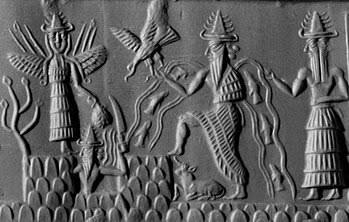
2)Lahmu and Lahamu : They are twin deities, the first gods to be born from the chaos that was created by the merging of Apsu (consort of Tiamat) and Tiamat (the primordial water goddess); this is described in the Babylonian mythological text Enuma elish (c. 12th century BC).In the game, they are simply known as water spirits. (Some artist draw them as two sea serpent, similar to Tiamat)

3) Utukku (also known as Udug) : They were an ambiguous class of demons who were sometimes thought of as good and sometimes as evil. No visual representations of the udug have yet been identified, but descriptions of it ascribe to it features often given to other ancient Mesopotamian demons: a dark shadow, absence of light surrounding it, poison, and a deafening voice. In the game, they are the spirits of unburied mortals, prototype of modern vampires.
4) Gallu demons hauled unfortunate victims off to the Underworld (Irkalla). They were one of seven devils (or "the offspring of hell") of Babylonian theology that could be appeased by the sacrifice of a lamb at their altars. {We met them when they took Nikkal to Irkalla}

16 notes
·
View notes
Note
In Egyptian, Greek, Norse, or other mythologies, the marriage and breeding between brother and sister are common amongst the gods. In the Babylonian creation myth, Lahmu and his sister Lahamu are the parents of Anshar and Kishar who are in turn the parents of the first and main gods. In Chinese mythology, Nüwa and Fuxi, who are godly siblings married to each other, are the creators of modern humans. GRRM was trying to depict that too with the Targaryens who genuinely have the blood of the dragon, a magical bloodline of gods and mythical creatures.
People make their little tumblr gifsets of Greek gods in modern AU’s and ship the gods and their lovers, especially Hades and Persephone (uncle and niece) but clutch their pearls at Targaryens and call them blood purists. Never makes any sense.
It's a very interesting message you sent me, thank you for taking the time to write it nonnie!
I don't want to sound mean, but.. I'm not sure they actually know Hades and Persephone is incestuous. They probably just know that Hades is the Greek god of the Underworld, read stories set in a modern alternate universe about beautiful and pure Persephone falling for bad guy Hades, and thought it was a new cool ship.
5 notes
·
View notes
Text
The origins of human beings according to ancient Sumerian texts | Ancient Origins
The origins of human beings according to ancient Sumerian texts | Ancient Origins
https://www.ancient-origins.net/news-human-origins-folklore/origins-human-beings-according-ancient-sumerian-texts-0065
View On WordPress
#4500 BC#5000 BC#Adapa#Anu#Apsu#Creation Story#Ea#Enki#Enlil#Enuma Elish#Epic of Gilgamesh#Euphrates River#Garden of Eden#Iraq#Lahamu#Lahmu#Mesopotamia#Ninki#Nippur#Sumeria#Sumerian#Tiamut#Tigris River
1 note
·
View note
Quote
SUMER’S Heavenly VENUS [LAHAMU]… DEEP IN:side My [I'M] Celestial SCORPIUS’ PARALLAX Constellation [PC] Bloodlines of the SARGAS [THETA SCORPII] SUN EMPIRE of Ægyptian [SEE] King [SEEK] TUTANKHAMÚN
MU:13

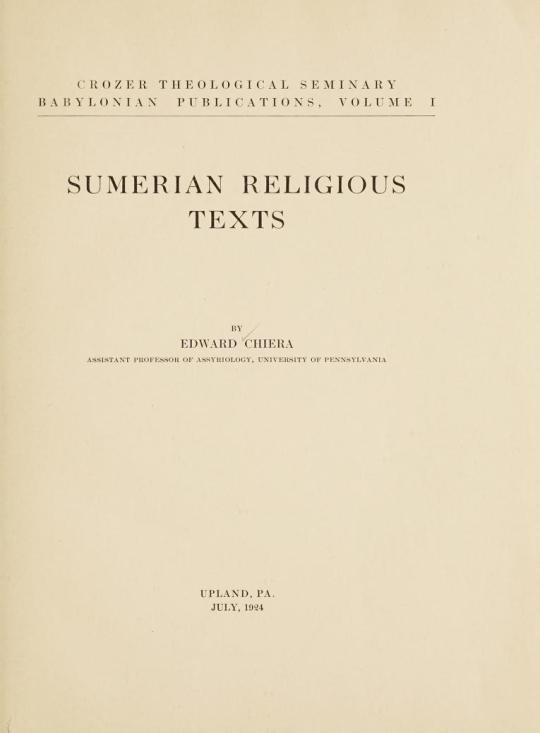

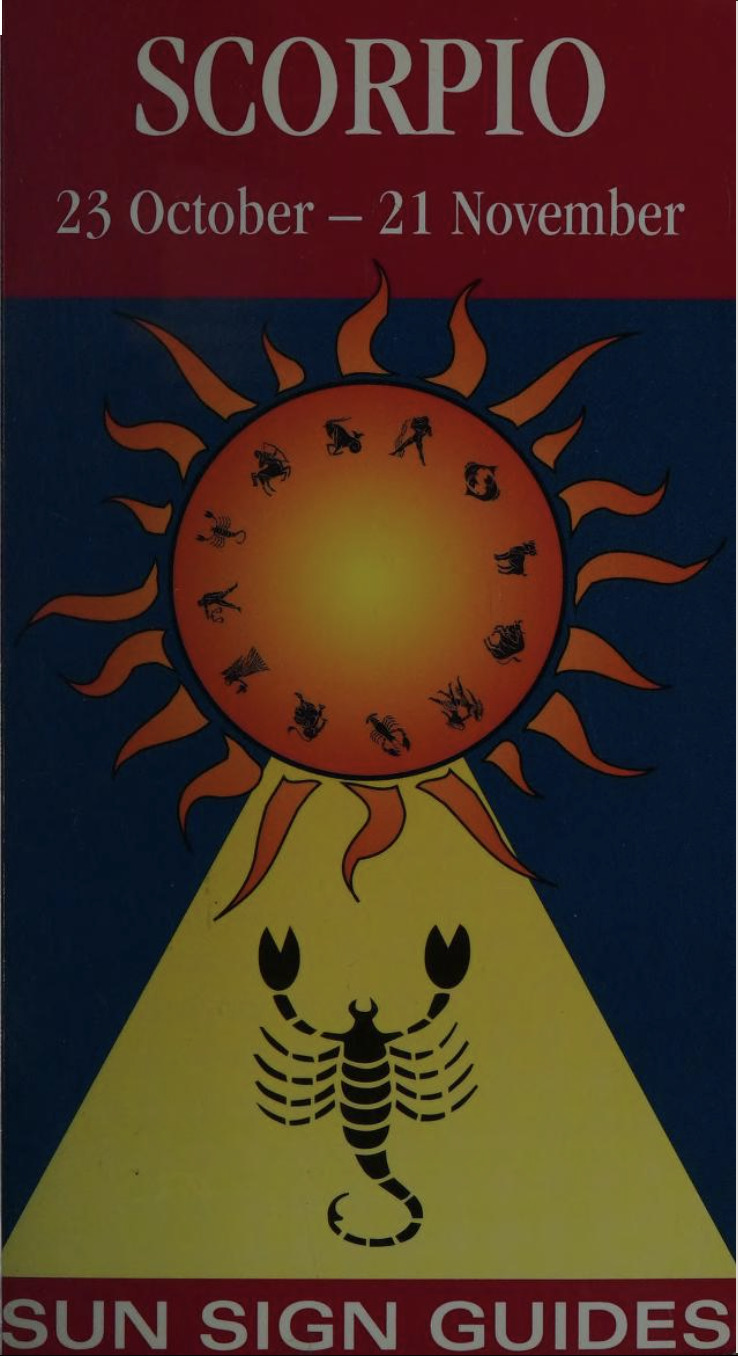
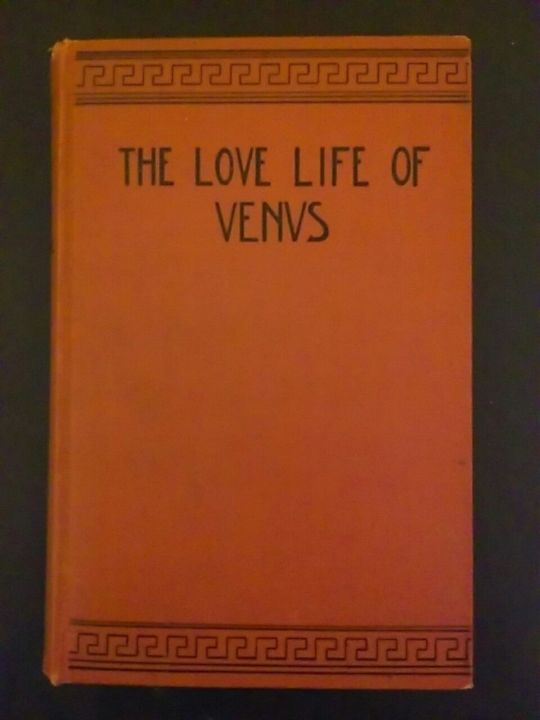

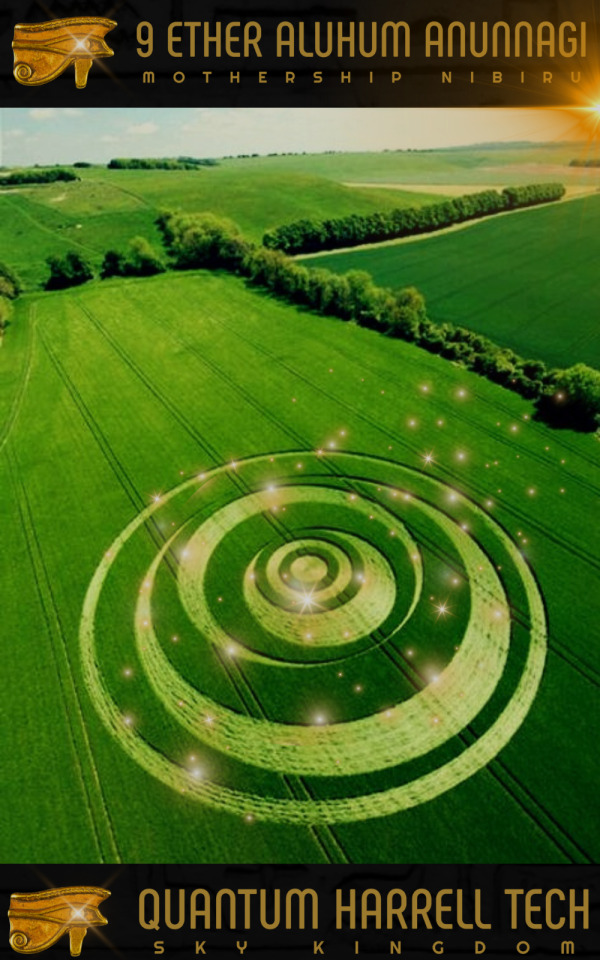
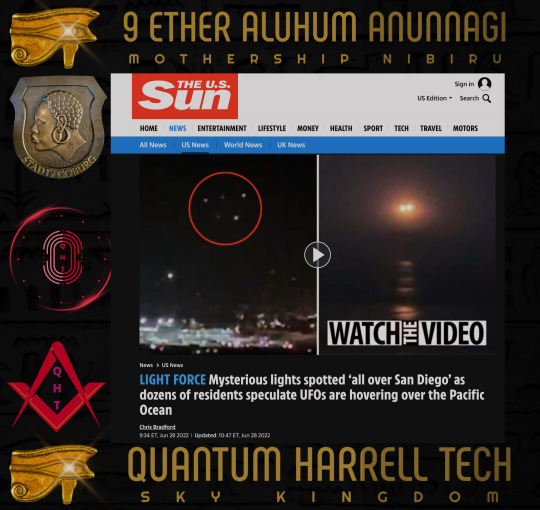


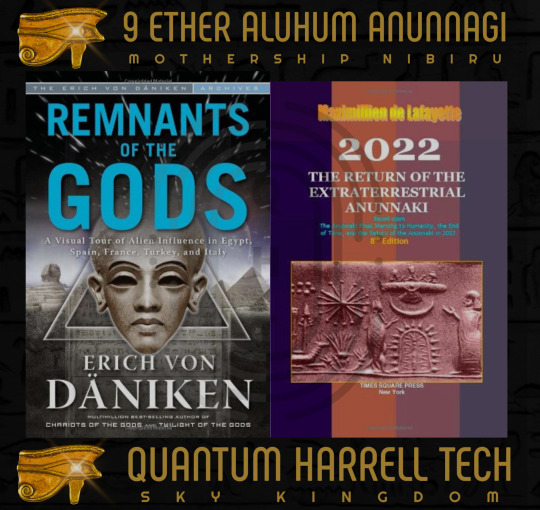

1 note
·
View note
Text

☆ “[Ki]{1} blessed me by making me transsexual{2} for the same reason [she] made wheat but not bread and fruit but not wine: because [she] wants humanity to share in the act of creation. ...” - Julian K. Jarboe
{1} In Babylonian mythology Kishar/ Ki is the daughter of Lahamu and Lahmu, the first children of Tiamat and Abzu/ Apzu. Kishar represents the earth as a counterpart to Anshar, the sky, and can be seen as an earth mother goddess. Her name also means "Whole Earth".
{2} Transsexual usually indicates medical transition, some say only binary trans folk can use it, but I digress. If you plan on any medical intervention, then you can use it, weather that is hrt or gcs/srs. Transgender is typically used for the entire trans experience, anyone who identifies as a gender different than what they grew up being told can identify as trans, that includes demigendered folk that do align closest to their agab.
Entry number one: Creation, The Dragons, and The Spiritual Transsexual Experience as a Dragonic Pagan
Creation:
The art peice I created represents the creation of the universe, as well as humanity. As I see it Tiamat and Apzu created the first gods and our universe, their dragonic granddaughter Kishar created humanity and our Earth/ is our Earth, this is all within modern context of their stories. (Not to be taken literally, I say this with the intention of these Dragons representing the metaphysical creation, not the physical. As I believe in them being a metaphor but they have developed in the metaphysical space, because if you can imagine it, then it can be real in a sense.)
Also, no, I do not believe in a "first two people", I believe in evolution. My art represents creation of the human soul, well the piece needed for reincarnation. I believe our souls are not a 1 and done, we have many souls that make up our current selves, that collective soul gains more energy throughout each incarnation. We collect enough until we become gods ourselves, the gods we know are our ancestors (even the original xtian god), they had to learn humanity before they could be a spiritual leader for humanity. We hold the souls of our ancestors as well, even the forgotten one, our loved ones never truly leave us, you may see a peice of them in your kids (even the adopted ones). Looking at the creation of us through both Evolution and Metaphysical can help us understand the 9 aspects of our soul and body. Those 9 aspects being the physical body, ethric body, sentient soul, soul body, intellectual soul, conscious soul, spirit self, life spirit, and spirit body.

Understanding the Human, the Soul, and the Spirit can help us achieve being one with our current higher self.
The Dragon’s teach us to hold both the light and the dark to create a path for our higher self to walk with us. We must not hide our darkness, our pain, our sadness, our anger, to validate then rid them (using coping mechanisms incorrectly) is to suppress them. You must validate them and let them flow throughout yourself, let them disolve on their own. (Obviously if you are in a space with folks that don't understand, then hold them for later, then release them properly. I.e. writing, screaming, crying, ect.) Do not allow this to harm anyone in a physical manor or mental manner, (Baneful magick is hella valid though).
🌌 By partaking in the creation of a better you, you are a creator of your own universe. 🏞
The Dragons:
Dragons, "large mythical beasts that enjoy terrorizing villages with their fire breatheing powers-" Incorrect. Not all dragons have wings or breathe fire—and some do. Dragons are primordial teachers, here long before this current Earth <‐(I will not speak of my beliefs on that, as it may be uncomfortable for some). Dragons are found in ancient myths across the globe, I believe that even some deities started as Dragon Beings (ex. Brigid, Dionysus, Lucifer/ the Infernals, angels, primordial gods, ect).
{Disclaimer: When learning from these powerful Primordial Dragons, you must take into account that they are not deities, they are much more powerful. These Dragons MUST be respected, do not twist their words, do not treat them like pawns, do not evoke them. If you invoke (invite) a Dragon not in mythology and they come to you, do not speak their name to another soul without their permission. If you do these things without permission, you will lose the ability to communicate with the Dragon you called for.}
There are dragons for every element and season, even elements you may not see as being elements. There is no Dragon that completely rule over just one element, they may prefer to show you the power of a specific element though. But there are Dragons that preference storms, thunder, and/or lightning. There are chaos dragons and light dragons. Dragons that guard great treasures and some that live in the Fae Realm (those are sometimes called Faery Dragons, but that is not an accurate term). Many dragons are also shapeshifters, Dragons hold great power, magick, and ancient wisdom, they can be either more harmful or helpful, but are usually in a grey area teaching skills that may do either depending on the student. Working with dragons can give great power to you; just always remember that you already are holding that power, they are just teaching you how to use it.
To work with dragons spiritually, establish a connection through meditation, visualization, and intuitive communication. That involves asking Dragons into your spiritual space and understanding the unique abilities they possess and can teach you. The overall steps to work with Dragons in your spirituality are as follows: #1 Research Dragon mythology and symbolism, don't go with one source. #2 Create a sacred space for meditation and connection, doesn’t have to be a physical space. #3 Develop and listen to your intuition, writing down random (on topic) thoughts can be very helpful. Invoke (invite) your Dragon Teachers during spiritual practices, ask for an audience essentially. It may be scary if you start working with them all of a sudden, I suggest working with "smaller" Deities first, ones who enjoy human company (still treat with respect, they are teaching you as well).
The Dragons are here to help support your transition into your highest current self. Many are glad to teach you as long as you are willing to respect and learn from them. Dragon energy is very similar in vibration to that of the 10th dimension, and although this is a powerful energy, it is also one that is full of wisdom, peace, and knowledge. Most of the time we need help to get out of our own way and stop holdingour power back. We need to let go of the patterns and habits that have built up over the years, if you are freeing yourself from the xtian cult like thinking, you need to unlearn what you were taught. Once these thoughts and actions are gone, we are free to just be, free to live in service to ourselves. We just need a little help from those willing to teach, in all dimensions.
The Spiritual Transsexual Experience as a Dragonic Pagan:
☆ My Transsexuality is part of my Spiritual Enlightenment, I am creating myself to be the best me, and the best me is the transmasc that finds a spiritual experience in loving my trans body. The tiny bit of medical intervention I shall have, is not to shape a new me or to fix your perception of me. It is to match my body to how I feel, testosterone brings me a new experience, one that makes me feel closer to being my own God. Kishar is an important Draconic Teacher on my Transsexual Spiritual Journey, she made me Trans so that I (any trans person really) may find creation to be beautiful, the way she does. She shows me the light every time I see how far I've come.
When experiencing love, it's always beautiful, I choose to be t4t, the spiritual Enlightenment I feel when loving other Transmascs makes me feel the highest vibrations. As if our souls are embracing eachother in perfect balance. The joy I feel in my life partner, (he/him), and I (he/it/they), transitioning together is godlike. I can't wait to feel more of this, the Dragons have taught me that it is the most beautiful thing to have more than one partner, not all the time can you fulfill each others needs. I love hearing my Queer Platonic Boyfriend speak of his crushes, and I love telling him about mine.
Kishar asks for only one thing during transition, do not lose yourself in trying to make yourself appealing to them. You are your own god, you only need to please yourself.
{When I say "you are your own god" I don't mean I am/ you are better than anyone, or that you should do things against the reasonable moral code. You are only in control of yourself, your actions are not "divine interaction", they are yours, you control yourself. You make yourself, your identity is only yours and no one else's.}
{Anyway, this is the end of entry #1, I think I much prefer a digital grimoire over a physical one, much easier.}
[...] = replacement words
{...} = notes and/or disclaimer
#spiritualgrowth#spiritual awakening#spiritual development#spiritualjourney#spiritual knowledge#spiritual ascension#draconian#luciferian witch#dragon witch#dragonic#transsexual#transgender#trans rights#trans pride#transmasc#transmasc4transmasc#genderfluid#queer#queer dragons#Iranian dragon witch#tiamat#ki mother earth#holy spirit#dragon spirit#transsexual spirituality#Spotify
1 note
·
View note
Text
BABİL YARATILIŞ DESTANI ENUMA ELİŞ Ünlü mitolojik Babil tanrısı Marduk'un Tiamat'ı yenerek dünyayı yeniden yaratması anlatılıyor. Yedi adet tabletten yani bölümden oluşan kitap hızlıca okunsa da yine de dikkat istiyor. Mitolojik metinlerde sıkça rastlanan sembolizm burada da mevcut, bir şeyle başka bir (veya birçok) şey kastediliyor. Babil mitolojisinde insanın ve dünyanın yaratılışının anlatıldığı bir metin. Dini törenlerde (bugünkü Yasin-i Şerif gibi) toplu halde okunmaktaymış. Eserin son bölümünde de bu eserin halk tarafından sık sık okunması tembih ediliyor. Ayrıca kitaptaki tanrıların savaşması, insanlar gibi saraylarda yaşamaları yani antropomorfik (insanbiçimci) özellikte olmaları Mısır, Yunan, Sümer ve İskandinav mitolojileri gibi birçok söylencedeki Tanrı anlayışlarıyla benzerlik gösteriyor. Bu milletler arasında, geçmişe dayanan bir kültürel etkileşimden söz edilebilir. Daha evren yokken birbirine aşık 2 kozmik varlık Apsu ve Tiamat vardı. Apsu tatlı su tanrısı, tanrıların babası ve Tiamet tuzlu su tanrıçası, tanrıların annesi. Birbirine aşık bu iki varlığın sularının birbirine karışmasıyla Lahmu ve Lahamu göründü. Lahmu ve Lahuma yaratıcı Tanrı ve Tanrıçadır. Daha sonraki tanrıların atalarıdır. Bunların soyundan gelen Ea, Apsu'yu öldürür ve suların üzerinde (yani Apsu'nun üzerinde) kendine bir ev inşaa eder. Bu kutsal evde Marduk varoldu. Tanrılardan önce varolan kozmik varlıklar, bunların Tanrıları sonrasında Tanrıların insanları çamurdan oluşturması ve Tanrının kendi babasını (atasını) öldürmesi yunan mitolojisine çok benzer geldi. Bu destana göre Marduk insanları savaşta yendiği, kendisine karşı Tiameti kışkırtmış olan Kingunun kanından yaratıyor. İnsanı yaratmaktaki amacı ise Tanrıların işlerini yapsınlar Tanrılar rahat rahat dinlensin diye. Sonrasında Tanrılar kendilerine Babilde evler yapıyor ve Marduk'un Tiabeti nasıl yendiğini herkes öğrensin diye destanı yazıya döküyorlar. Üzücü tarafı ise mezapotomya mitlerinin temeli olan ve Fırat Dicle arasını anlatan bu tabletin İngiltere'de sergileniyor olması

0 notes
Text
Enuma Eliş Destanı (Tam Özet)
Enûma Eliš Antik Mezopotamya'da yazılmış yaratılış destanına verilen isimdir. Bu ismin verilmesinin sebebi destanın başlangıç metninin ilk iki kelimesi olup, manası ''yukardayken'' dir. Destan, yaklaşık 1000 satırlıdır ve 7 farklı çivi yazısı tabletine yazılmıştır.
Enûma Eliš Antik Mezopotamya’da yazılmış yaratılış destanına verilen isimdir. Bu ismin verilmesinin sebebi destanın başlangıç metninin ilk iki kelimesi olup, manası ”yukardayken” dir. Destan, yaklaşık 1000 satırlıdır ve 7 farklı çivi yazısı tabletine yazılmıştır.
Şimdi Alexander Heidel tarafından kaleme alınan Babil Yaradılış Destanı, Enuma Eliş kitabından alıntılayacağımız destanın tam özetini…

View On WordPress
#Alexander Heidel#Anşar#Anu#Anunnakiler#Apsu#Babil Kulesi#Babil Yaradılış Destanı#Babiller#Damki#Ea#Enlil#Enuma Eliş#Gök Cisimleri#İnsanın Yaratılışı#Kingu#Kişar#Lahamu#Lahmu#Marduk#Mummu#Tiamat#Yaradılış Destanları#Yaratılış Hikayeleri#Zenit
1 note
·
View note